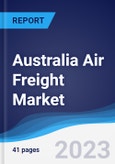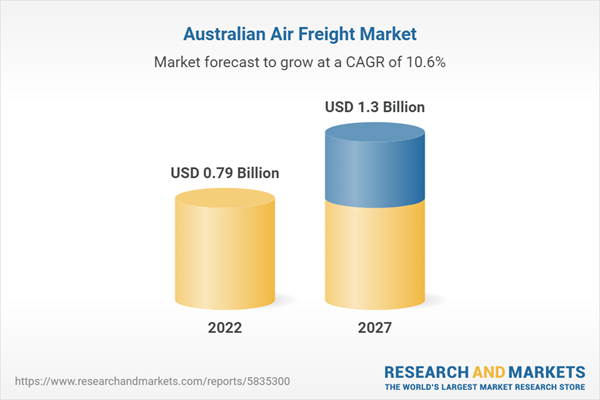Air Freight in Australia industry profile provides top-line qualitative and quantitative summary information including: market share, market size (value and volume 2017-22, and forecast to 2027). The profile also contains descriptions of the leading players including key financial metrics and analysis of competitive pressures within the market.
Key Highlights
- The air freight sector is defined as consisting of revenues generated from freight transportation by air.
- The Australian air freight sector had total revenues of $0.8 billion in 2022, representing a negative compound annual growth rate (CAGR) of 7.8% between 2017 and 2022.
- Sector consumption volumes declined with a negative CAGR of 8.6% between 2017 and 2022, reaching a total of 1.3 billion FTK in 2022.
- The Australian air freight sector has declined recently owing to several factors such as increasing interest rates and rising inflation. High-interest rates reduce access to credit for the companies involved, thereby reducing the volume of investment which negatively impacts air freight. For instance, according to the OECD, the long-term interest rates grew from 2.6% in December 2017 to 3.6% in December 2022.
Scope
- Save time carrying out entry-level research by identifying the size, growth, and leading players in the air freight market in Australia
- Use the Five Forces analysis to determine the competitive intensity and therefore attractiveness of the air freight market in Australia
- Leading company profiles reveal details of key air freight market players’ global operations and financial performance
- Add weight to presentations and pitches by understanding the future growth prospects of the Australia air freight market with five year forecasts by both value and volume
Reasons to Buy
- What was the size of the Australia air freight market by value in 2022?
- What will be the size of the Australia air freight market in 2027?
- What factors are affecting the strength of competition in the Australia air freight market?
- How has the market performed over the last five years?
- Who are the top competitors in Australia's air freight market?
Table of Contents
1 Executive Summary
2 Market Overview
3 Market Data
4 Market Segmentation
5 Market Outlook
6 Five Forces Analysis
7 Competitive Landscape
8 Company Profiles
9 Macroeconomic Indicators
10 Appendix
List of Tables
List of Figures
Companies Mentioned (Partial List)
A selection of companies mentioned in this report includes, but is not limited to:
- Deutsche Post AG
- Qantas Airways Limited
- Kuehne + Nagel Inc
- FedEx Corp
Table Information
| Report Attribute | Details |
|---|---|
| No. of Pages | 41 |
| Published | March 2023 |
| Forecast Period | 2022 - 2027 |
| Estimated Market Value ( USD | $ 0.79 Billion |
| Forecasted Market Value ( USD | $ 1.3 Billion |
| Compound Annual Growth Rate | 10.5% |
| Regions Covered | Australia |









